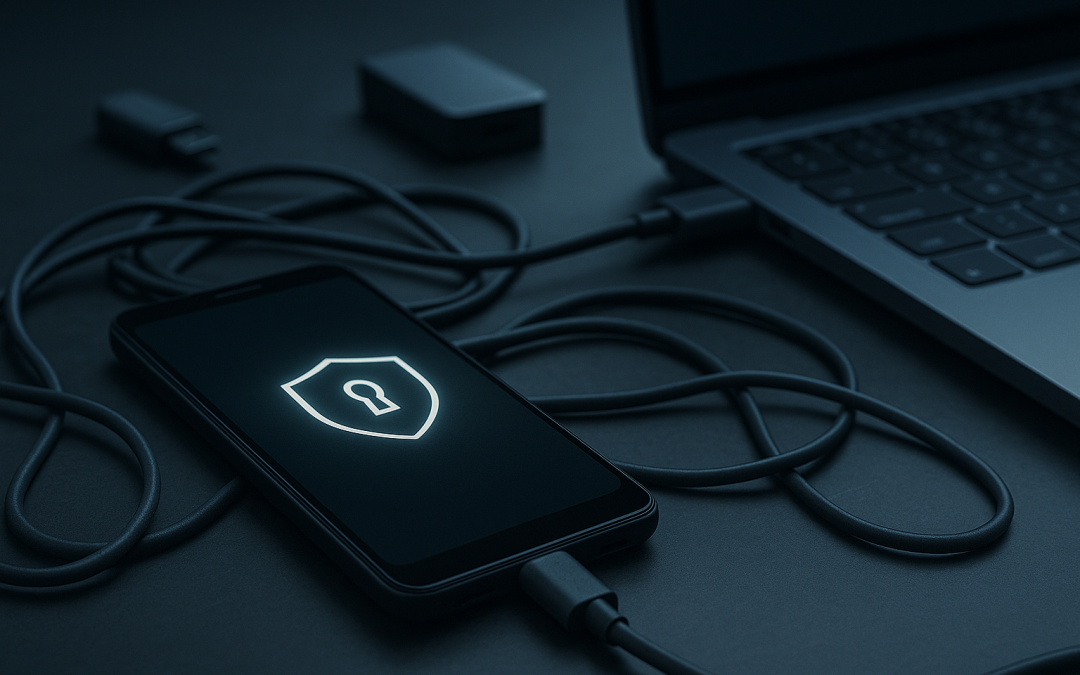A modern guide to SMS/MMS extraction, privacy controls, and Android OS security changes
For years, most Android phone collections in investigations and eDiscovery have followed a familiar routine: connect the device to a computer, create a local backup, and extract messages or media from that backup.
These tethered methods offered investigators a reliable way to access phone data, but recent Android security and permission changes have exposed their limits.
Today, a new model is taking hold. Instead of depending on computers, cables, and decrypted backups, native on-device Android applications now allow custodians to perform targeted, privacy-first collections directly from their phones.
This shift marks a turning point in how mobile evidence is gathered and verified.
Why Tethered Isn’t Always Better
Tethered tools still have their place, particularly for legacy workflows or full physical extractions. But their weaknesses are growing harder to ignore.
Each new Android release introduces tighter privacy controls, stronger encryption, and reduced access to local message databases. Backup files that once exposed message data for parsing are now heavily encrypted or unavailable to third-party software.
Even when access is possible, tethered methods require driver installations, computer compatibility, and in many environments, corporate or government IT permissions that make the process slow or unworkable.
Native Android apps operate within the platform’s approved framework.
They access data through system-level APIs rather than exported backups, eliminating the need for external computers and greatly reducing the number of steps and potential failure points.
A Platform Divide: Android vs. iOS
It is important to note that this “native collection” approach currently applies only to Android devices. Apple’s iOS platform prevents third-party applications from reading Messages content or similar data stores.
As a result, even the most advanced tools must perform iOS collections through computer-based backups.
Android’s open yet secure framework allows properly permissioned apps to access SMS and MMS content directly through sanctioned interfaces, making it the only mobile operating system where true on-device message collection is possible.
Adapting to Modern Android Frameworks
Recent Android versions, from 14 through 16, introduced stricter data-access boundaries and new limits designed to enhance privacy and system integrity. These changes have created serious challenges for collectors who rely on backup parsing or local database extraction.
Native Android applications are better equipped to adapt because they use Google’s supported APIs instead of raw file access.
By employing adaptive and compliant read processes that align with Android’s evolving security model, these apps continue to function even as the underlying system changes.
The result is a consistent and verified message collection without waiting for each OS update to be reverse-engineered.
The Benefits of On-Device Collection
- No computer required. Custodians can securely complete their own collections from anywhere.
- Faster and simpler. Setup takes just minutes, with no drivers, cables, or special hardware required.
- Privacy-first by design. Custodians can review what is being collected before anything leaves their phone, ensuring confidence and cooperation.
- Future-proof performance. Operating through Android’s approved interfaces allows much faster adaptation to new releases than methods based on decrypted backups.
This combination of efficiency, transparency, and technical resilience is why many clients now refer to CrossCopy Mobile as their go-to Android collection app. It provides a secure, compliant, no-computer workflow with a privacy-first focus that keeps pace with Android’s rapid evolution.
A Better Path Forward
The move toward native on-device Android collection is not just a convenience upgrade. It represents a fundamental evolution in how digital evidence can be gathered responsibly. While tethered backups will continue to serve certain use cases, organizations seeking scalable, privacy-focused, and defensible mobile data workflows are finding the advantages of native collection hard to ignore.
CrossCopy Mobile exemplifies this new model by combining verified Android API access with a custodian-friendly design. It shows how mobile forensics can respect privacy, streamline logistics, and remain adaptable as platforms continue to evolve, key ingredients for the next generation of defensible collections.

